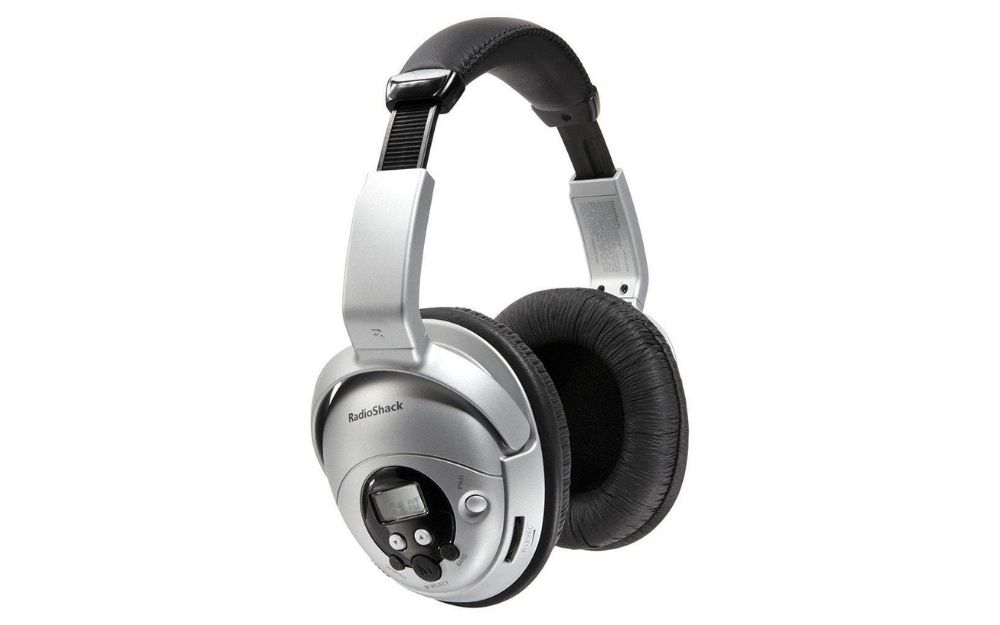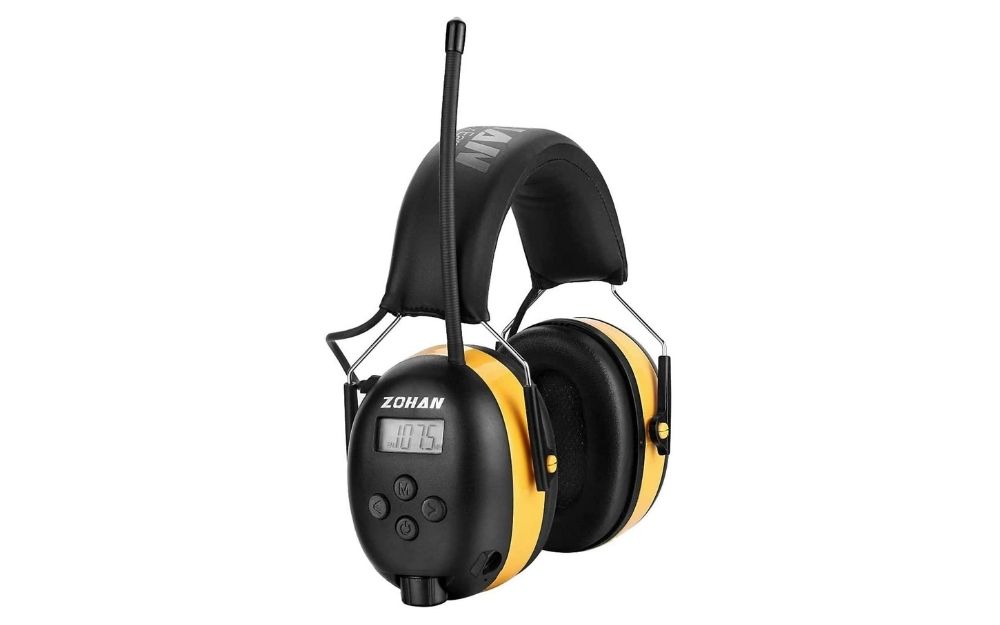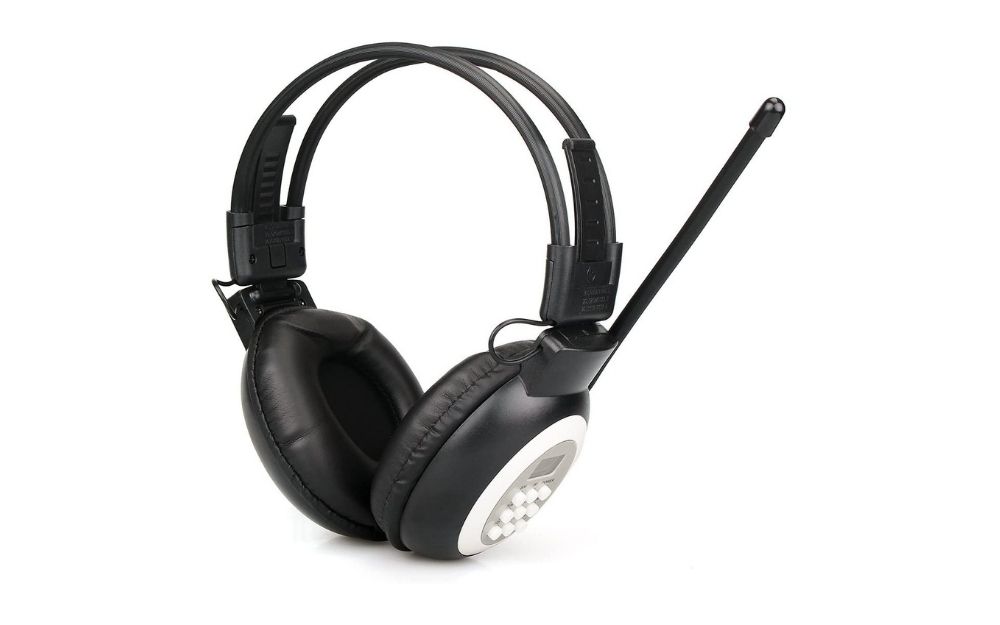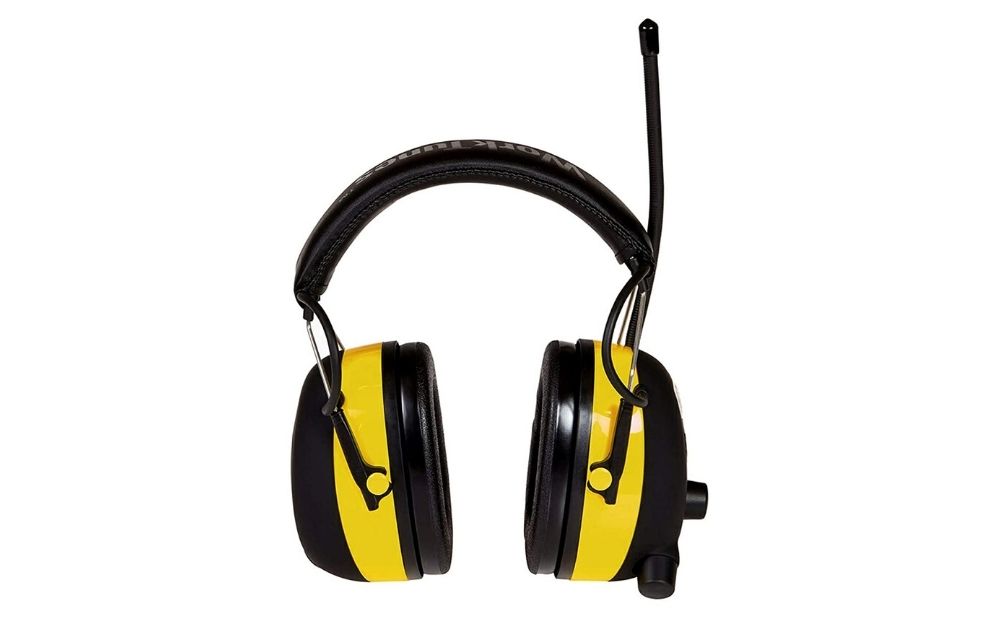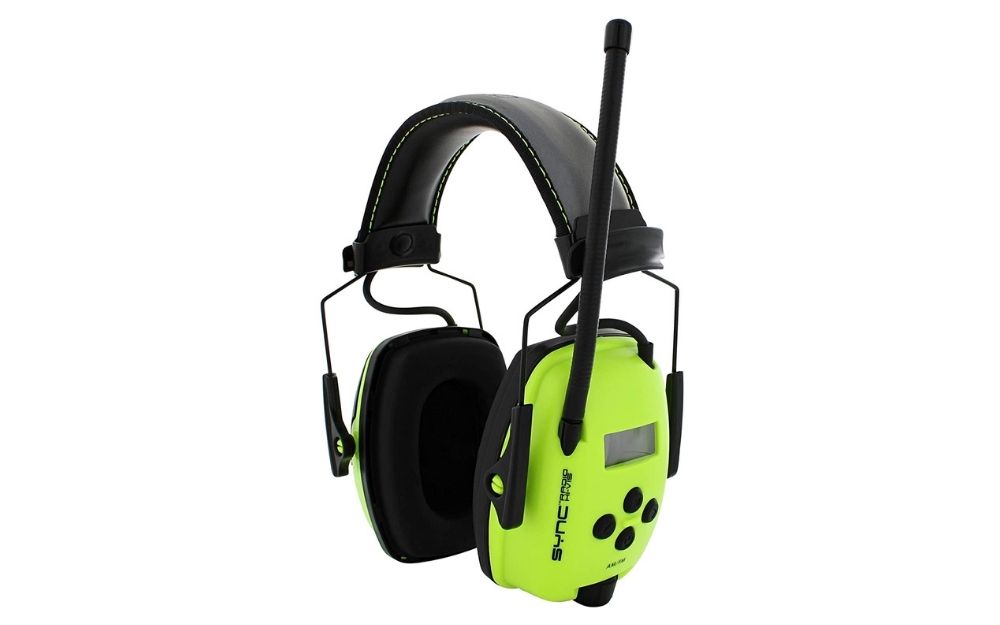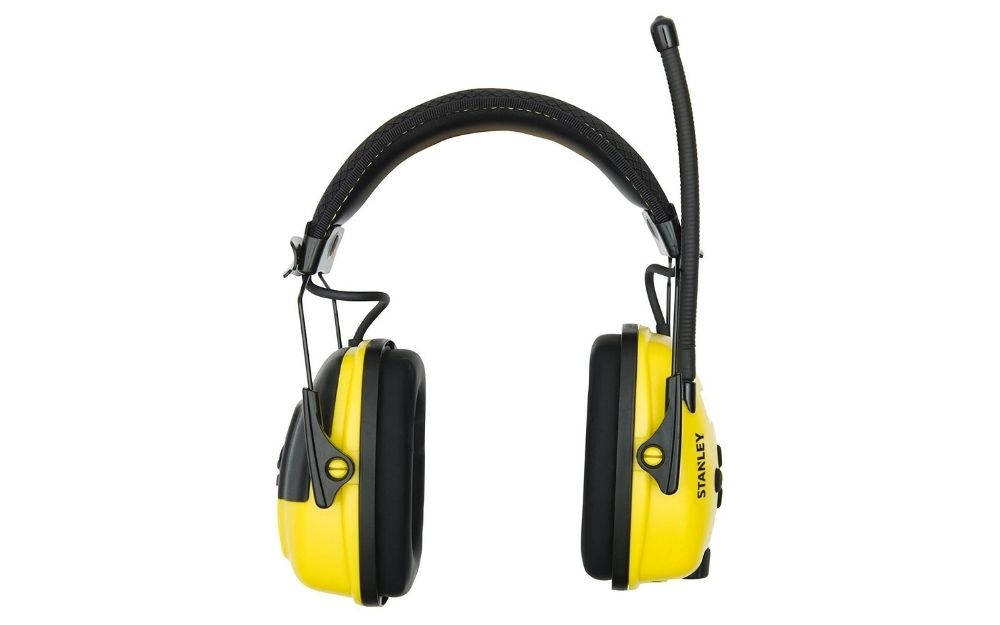Gone are the days where we had to stay in one room and gather around the ‘wireless’ to listen to our favorite music or radio shows.
With the combination of digital technology and industrial safety measures, the number of portable radio headphones available to us today are endless.
Whether you’re looking for noise-canceling technology to protect your hearing during a loud factory shift or simply want a way of taking your favorite radio shows along with you on your daily walk, there is a radio headphone out there for you.
Take a look at our list of the best radio headphones and radio earmuffs on the market today and make up your own mind as to which is the best for you.
Best Radio Headphones
| # | PREVIEW | Product | |
|---|---|---|---|
| 1
Best For Low Budgets
1RadioShack AM/FM Stereo Headset Radio
|
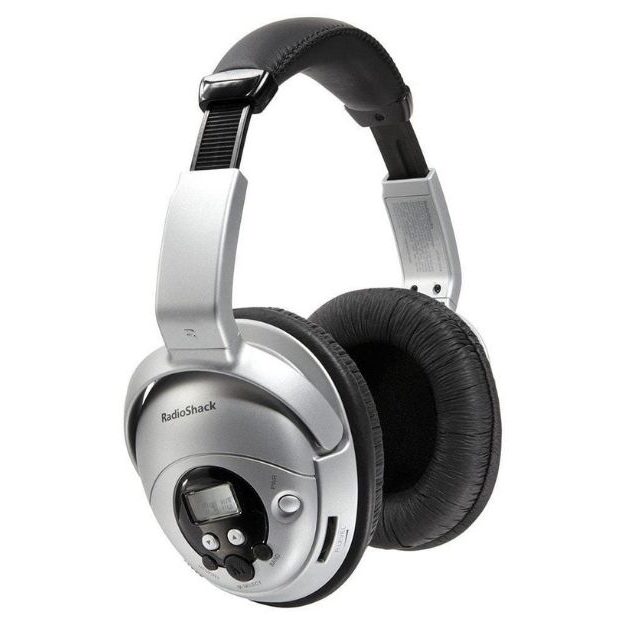
|
|
|
|
|
|||
| 2 |
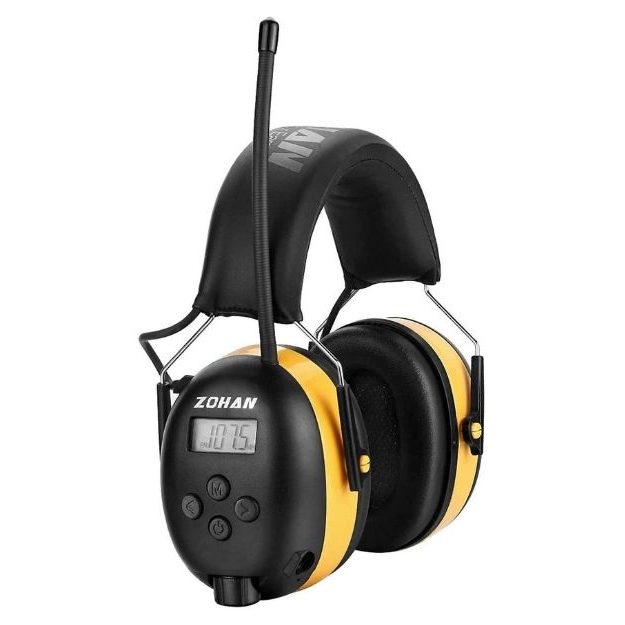
|
|
|
|
|
|||
| 3 |
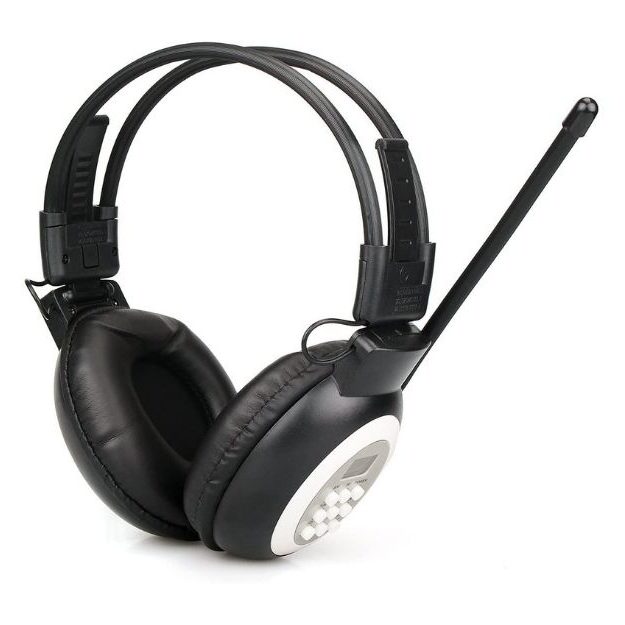
|
|
|
|
|
|||
| 4
Best Overall
43M WorkTunes AM/FM Hearing Protector
|
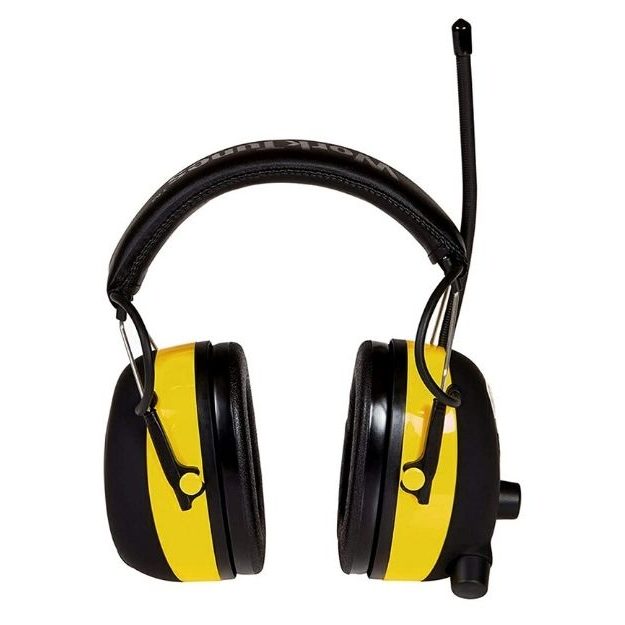
|
|
|
|
|
|||
| 5
Best For Higher Budgets
5Honeywell Howard Leight Digital Earmuff
|
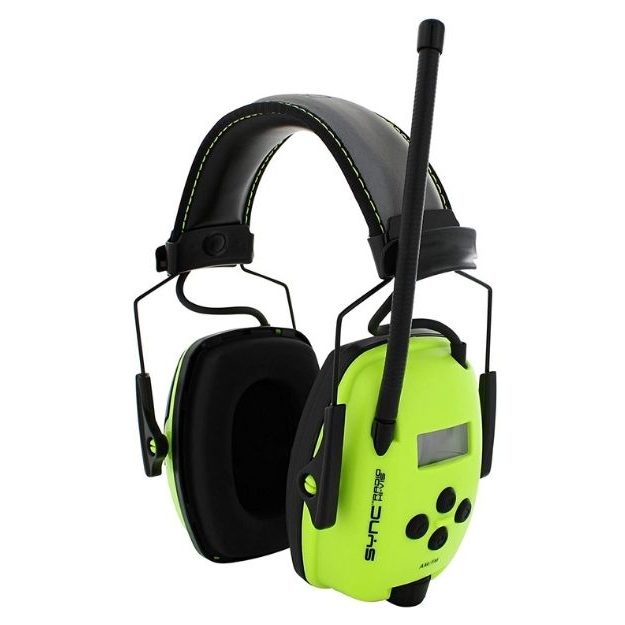
|
|
|
|
|
|||
| 6 |
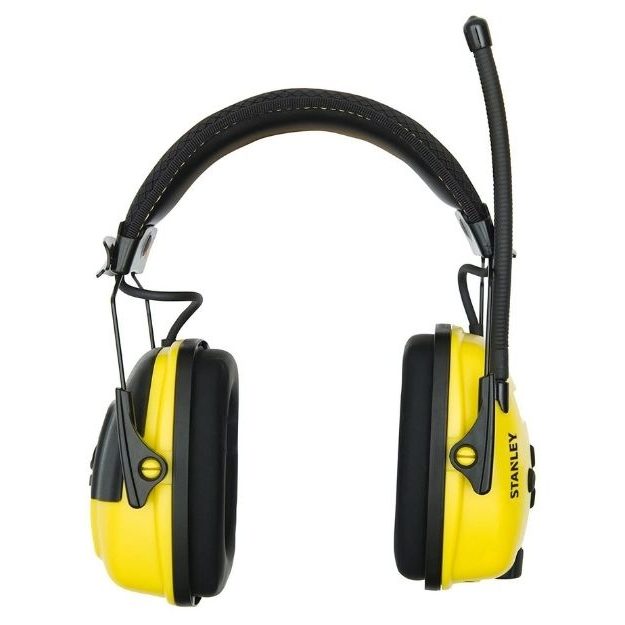
|
|
|
|
|
|||
1. RadioShack AM/FM Stereo Headset Radio
- Able to tune into both AM and FM from one set of headphones.
- Standard 1/8″ audio cable means you can listen to another device such as an MP3 player.
- 20 presets to program in your favorite radio stations.
- LCD display screen.
Despite being around for more than ten years, there is a reason why Radio Shack still gets a mention in the best radio headphone list.
Ideal for people with a lower budget, these radio headphones are both robust and reliable.
Even after all this time, the sound quality of the RadioShack Headset Radio still holds its own against the other modern radios on the market today.
Even better, they’re incredibly easy to use. With just one flick of a switch, your headset will tune in to more than 10 pre-tuned stations of your choice.
The small LED screen on the side of the right earmuff will also all let you know exactly what you’re listening to.
Along with unbeatable sound quality and their user-friendly nature, you don’t ever have to worry about being uncomfortable with this sleek headset.
Thanks to their composite cushioned earmuffs and adjustable headband, you can adapt this headset to fit any sized or shaped head comfortably.
Specifications
Pros
- Great value for money.
- Cushioned adjustable headband.
- Extra E-Bass function.
- Subtle designs.
Cons
- No Bluetooth functionality.
2. ZOHAN EM042 AM/FM Radio Headphone
- Internal chip for powerful radio reception.
- Noise reduction rating of 24 decibels.
- 3.5mm audio input jack.
- LED screen for easy operation.
The Zohan EM042 is known as one of the best radio headphones for mowing.
Not only because it delivers some of the best sound quality around with clear broadcast signals, but also because it has the ability to successfully block out outside noise.
In fact, it has a proven noise reduction rating of 24 decibels thanks to its soft padding and tight seal around the ears.
If you enjoy being able to flick between channels, this radio headset stores up to 20 presets in the device, so there’s no need to remember those all-important favorite frequencies.
Going between stations is easily done, thanks to a user-friendly LED screen on the ear-muff.
As well as changing radio stations, you can use this panel to change the volume, add your favorite presets, and turn the device on and off.
And, for those times when you just want to put on some of your own favorite tunes, the handy audio jack allows you to plug in your phone, laptop, or other music-playing devices.
Specifications
Pros
- Unbeatable sound quality.
- Noise reduction functionality.
- Comes with a one-year warranty.
- Adjustable headband and padded earmuffs for comfort.
Cons
- It can sometimes be uncomfortable for prolonged wearing.
3. Retekess TR101 FM Portable Walkman Radio
- Wireless stereo radio.
- Foldable and adjustable headband.
- 3.5mm audio jack.
- LED screen for easy operation.
Cheap and cheerful are two words that spring to mind when you think of Retekess’ portable walkman radio.
While this sleek and minimal design may look a little different from the other radio headsets on the market, there is no denying its quality to price ratio.
For a fraction of the price of other models, the Retekess TR101 FM Portable Walkman Radio enjoys many of the same features.
These include the ability to preset your favorite stations, plug in other devices using the audio jack, and block your ears from harmful outside noises.
A downside to this radio headset is that it only supports FM, not AM radio, which may limit some users.
The quality of the sound this radio produces is also not to be sniffed at.
Its external antenna ensures a strong signal reception, allowing you to receive clear broadcasts indoors as well as outdoors.
Specifications
Pros
- Very portable, thanks to folding functions.
- Lightweight and padded for comfortable wearing.
- Built-in FM radio with ten preset channels.
- Fifteen volume levels for optimum listening.
Cons
- It only supports FM.
- Tends to slip off your head easily.
4. 3M WorkTunes AM/FM Hearing Protector
- Plug into other devices.
- Noise reduction rating of 24 decibels.
- Audio assist technology.
- 3.5mm audio jack.
Sturdy, comfortable, and high-quality; what more could you want from your radio headphones?
The 3M WorkTunes AM/FM Hearing Protector delivers on every level.
If you’re looking for something with endless options for listening, this high-tech piece of kit can be turned into 50 different presets, can be hooked up to your Bluetooth devices, and even features an audio jack for anything else.
If you’re looking for the ultimate comfort, the 3M WorkTunes feature cushioned ear pads and a cushioned and adjustable headband, allowing you to adapt them to your needs.
Specifications
Pros
- Ability to program up to 50 AM/FM stations.
- Auto scanning to quickly find stations.
- Versatile listening over Bluetooth, AM/FM, or through an audio jack.
- It can be operated while using gloves.
Cons
- Volume can be too quiet for some.
5. Honeywell Howard Leight Digital Earmuff
- Digital AM and FM tuning.
- Snap in-ear cushions for easy maintenance.
- Extremely high noise reduction rating.
- Hi-Viz color ideal for working environments.
As one of the best radio earmuffs on the market, you are sure to find everything you need in the Honeywell digital Earmuff.
Complete with 10 presets, you can choose your favorite AM or FM radio station, including a long list of digital stations.
Designed perfectly for the industrial and workplace environment, the Hi-viz paint finish will show up in even the poorest of light conditions.
With expert noise-canceling technology, you are free to enjoy the radio’s crisp sounds without any interference from the outside world.
If you wish to change to your own music collection, simply hook up the headphones to your own device with its simple aux cable attachment.
Specifications
Pros
- Patented Air Flow Control technology.
- Ten preset stations.
- High sound quality free of distortion.
- AUX cable to link up to other devices.
Cons
- Little on the pricier side.
6. Stanley Sync Digital Radio Earmuff
- AM and FM tuning.
- LCD display system.
- Ten preset stations for extra choice.
- AUX input to link up to other devices.
Stanley has expertly designed one of the best radio headphones on the market.
From its state of the art LCD display system to the patented Airflow control technology, you are guaranteed a crisp sound.
Choose from any FM and AM radio station or simply plug in your own music via the AUX cable which accompanies the headphones.
Adjust the snapback headband to perfectly fit any head shape or size, ensuring comfort no matter what you’re up to.
The set of headphones lightweight design is also a winning factor, making mobility while wearing them a breeze.
Specifications
Pros
- Lightweight design for mobility.
- Snapback headband for secure fitting.
- High noise reduction rating of 25.
- Air Flow Control technology reduces sound across all frequencies.
Cons
- It can cause sweatiness over a long period of time.
Radio Headphones Buying Guide
Technology
Radio technology has moved on leaps and bounds in the past few decades.
Going from one of the most primitive forms of communications in the early 20th century to the most modern in the 21st, little is now known about radio waves.
Isolating this technology into a set of headphones, however, is a far greater leap in terms of technology.
Today we can find a whole range of different technologies in just a set of headphones, from the wireless Bluetooth features to state of the art noise-canceling technology.
Wireless Radio Headphones
Wireless radio headphones combine wireless technology with radio technology. As the radio headset acts as the aerial itself, there is no need for an antenna or connection in any other form.
With the radio built inside the headphones, users are able to walk quite comfortably around and listen to the radio at their own will.
Unlike before, where you needed to be connected to an audio transmitter via a wire, the wireless radio headphone combines this technology with the headset itself.
This maneuverability allows buyers to use these devices when doing a variety of physical tasks. This makes wireless radio headphones ideal for runners or those working in factories and labor-based work.
Bluetooth Radio Headphones
Although very similar to the wireless radio headphones, Bluetooth radio headphones harness the power of Bluetooth technology to project the signal from a device through the headphones.
This way, you are able to link your headphones up to any device that has an option for Bluetooth.
As the headphones do not need to rely on themselves for an antenna, they can connect to a Bluetooth radio, a phone, a computer, and many other different electrical devices.
Noise Cancelling Headphones With Radio
Noise-canceling headphones work via a technique known as active noise cancelation or ANC. ANC works by using microphones to pick up low-frequency noise and neutralizing it before it reaches the ear.
The headphones generate a sound that is phase-inverted by 180 degrees to the unwanted noise, resulting in the two sounds canceling each other out.
Used particularly in an industrial setting, noise-canceling headphones allow users to wear an ear defending headset with a radio built.
This means users can protect their hearing from unwanted noise during a workplace environment but also listen to the radio for some light entertainment.
Used mainly in situations where heavy and loud machinery can possibly damage the users’ hearing, noise-canceling headphones can also increase the sound of the user’s radio.
Originally designed to be used by pilots on long-haul flights, noise-canceling technology has been harnessed by headphone designers to provide a perfect sound quality – ideal for when you’re trying to listen to your favorite radio station in a noisy environment.
Sound Quality
Sound quality can vary greatly from headphone to headphone and does depend on a number of different factors.
Quality of sound can be a changing factor simply when it comes to the make of the headphones.
Some makes and models of AM/FM headphones can have fantastic sound quality, yet cost four times the amount as another brand whose quality is not so good.
Along with a certain brand’s chosen technology, sound quality can also be affected by its surroundings. Radio waves can be sensitive to the walls of a building or certain materials that are placed around the user.
So to get the best quality out of your radio headphones, use them in an open space where the radio signal won’t be interrupted by the concrete or other materials that interfere with the sound quality of headphones.
The sound of certain headphones can also be changed by the design of the headphones themselves. Those with a flush seal from the earpiece to ear will provide far better sound quality than a set of headphones that are loose.
Comfort
When it comes to comfortable headphones, personal preferences are key; what works for one user may not work for another.
One of the biggest characteristics that affect the comfort of headphones is the choice between over-ear or on-ear headphones.
Over-ear headphones completely surround your ear and can even offer extra noise-canceling properties. This over-ear design means they may be more comfortable to wear over a long period of time.
The only negative to this is that it can become hot sweaty if worn for such a longer extension of time.
If you require long term comfort, it is important to purchase headphones that have great padding, tension adjustments, and a tight spring that sits within the band and hold them to your head.
On-the-ear headphones are normally smaller by design. As they rest just on your ears, it allows for more air to circulate around the ear, so overheating is no longer a problem.
Sitting on your ears can cause discomfort if worn for longer periods of time. The lack of a seal around the ear may even cause less ambient noise to interfere with the quality of the headphones.
Portability
Portability is a huge factor when deciding what headphones to buy, especially headphones with radio.
You are sure to be walking or even running around when listening to the radio, so having a pair of headphones that make this possible is important.
A few factors will affect a set of headphones’ portability, and deciding which one is more important to you is a personal choice.
First of all, the weight and size of the device can make a huge difference to the portability of the headphones. If the headphones are too bulky, they will simply be harder to carry or even store when you’re on the move, though heavier and sturdier designs tend to be more comfortable and equate to better sound quality.
Certain radio headphones will have a collapsible design that allows users to fold each side of the left and right headphone into the center of the band. This makes it so much easier to carry around and even store them on the go.
Battery Life
AM/FM headphones take power from a built-in rechargeable battery, and the size of this battery can vary between designs, affecting the overall battery life.
An over-ear design will generally hold a larger battery and guarantee a much longer battery life. The general rule for over-ear headphones is around 20-30 hours, though this can vary from device to device.
On most of the headphone designs, charging is usually done via a USB and added plug outlet.
Some designs, such as FM earmuffs, require AA batteries to power themselves. In this case, the battery life can often depend on the quality of the double-A batteries you are using.
Simply using your headphones to listen to the radio will drain the battery life far lower than if you are using its Bluetooth capabilities to stream music or such from another device.
Compatibility
The compatibility of headphones all depends on the make and type of headphone in question. Many modern Bluetooth headphones will be compatible with any device that uses Bluetooth as a standard feature.
The radio side of the headphones can vary between having FM and AM frequencies or just FM alone. The loss in popularity of AM radio may have a lot to be said for the decline of AM compatibility.
Finding particular headphones that are compatible with HAM radio can also be hard, so buying specific ham radio headphones may be a must.
Pricing Range
The price range can vary hugely when it comes to radio headphones. They can cost you as little as $20 or up to, and over the $100 mark. What you get for the extra dollars you spend can depend on a number of things.
Sound quality and durability are often factors that increase the cost of a pair of headphones, and paying that little extra can make a world of difference to both.
Radio headphones at the lower end of the price scale may simply have less added features than their more expensive counterparts.
These features include Bluetooth capabilities, a choice between FM, AM, and HAM radio signals, collapsible headphones, and many more.
Quite often, you may reach into the high echelons of prices and begin to pay for the name of the headphones only.
Our Verdict
Through our research, it is clear to see that the market of radio headphones can generally be separated into two different sections.
There are those headphones that have been purposely designed with health and safety noise-canceling attributes as their main objective, and the radio element is somewhat of an afterthought.
There are then others where the design of the headphones has come from a more radio-based angle, offering features and styles that complement this.
Deciding on which radio headphone is best for you all comes down to where you are going to be wearing your headphones and in what situations.
One thing that is very clear from our findings is, there is still a love for the original media format, radio.

